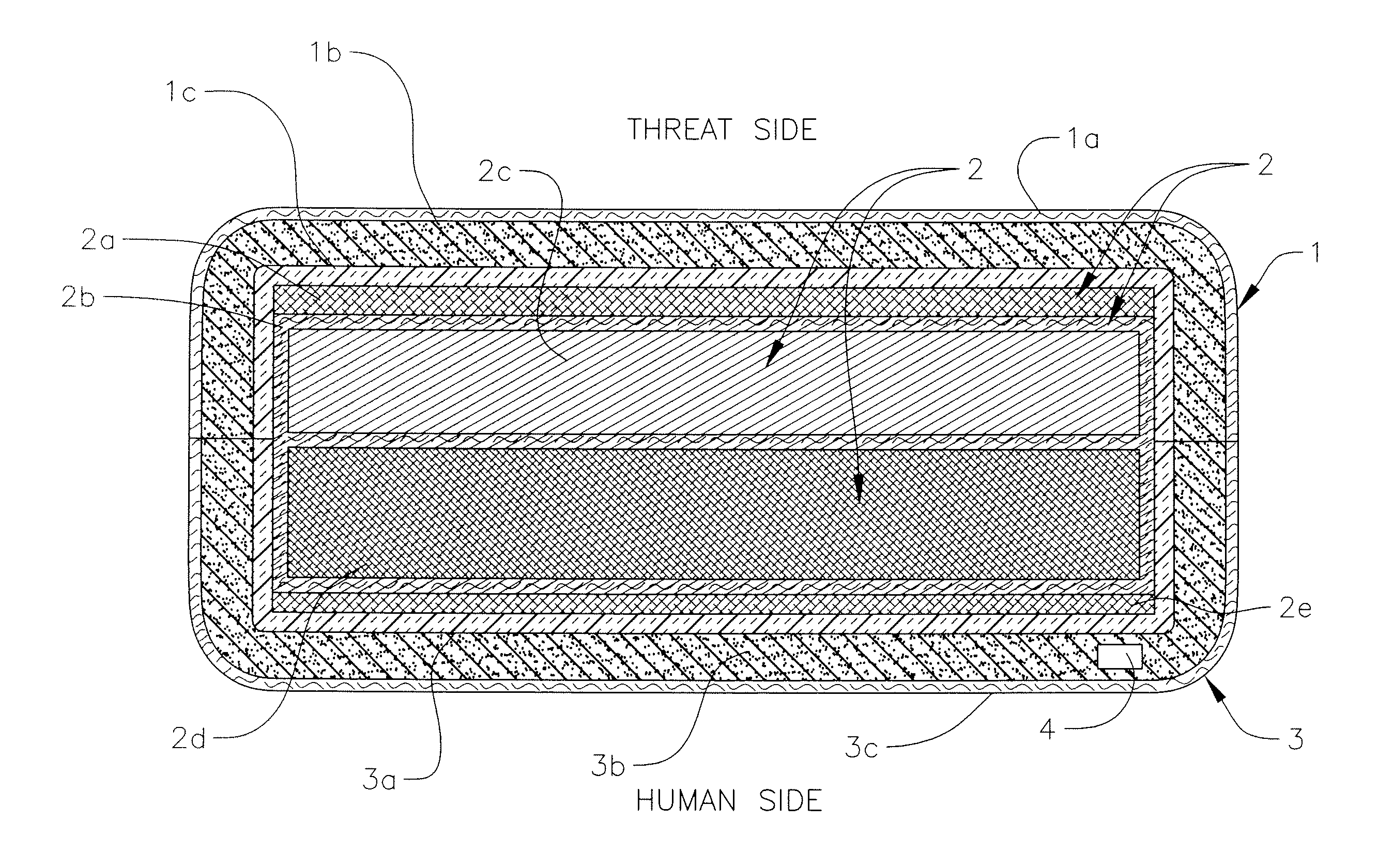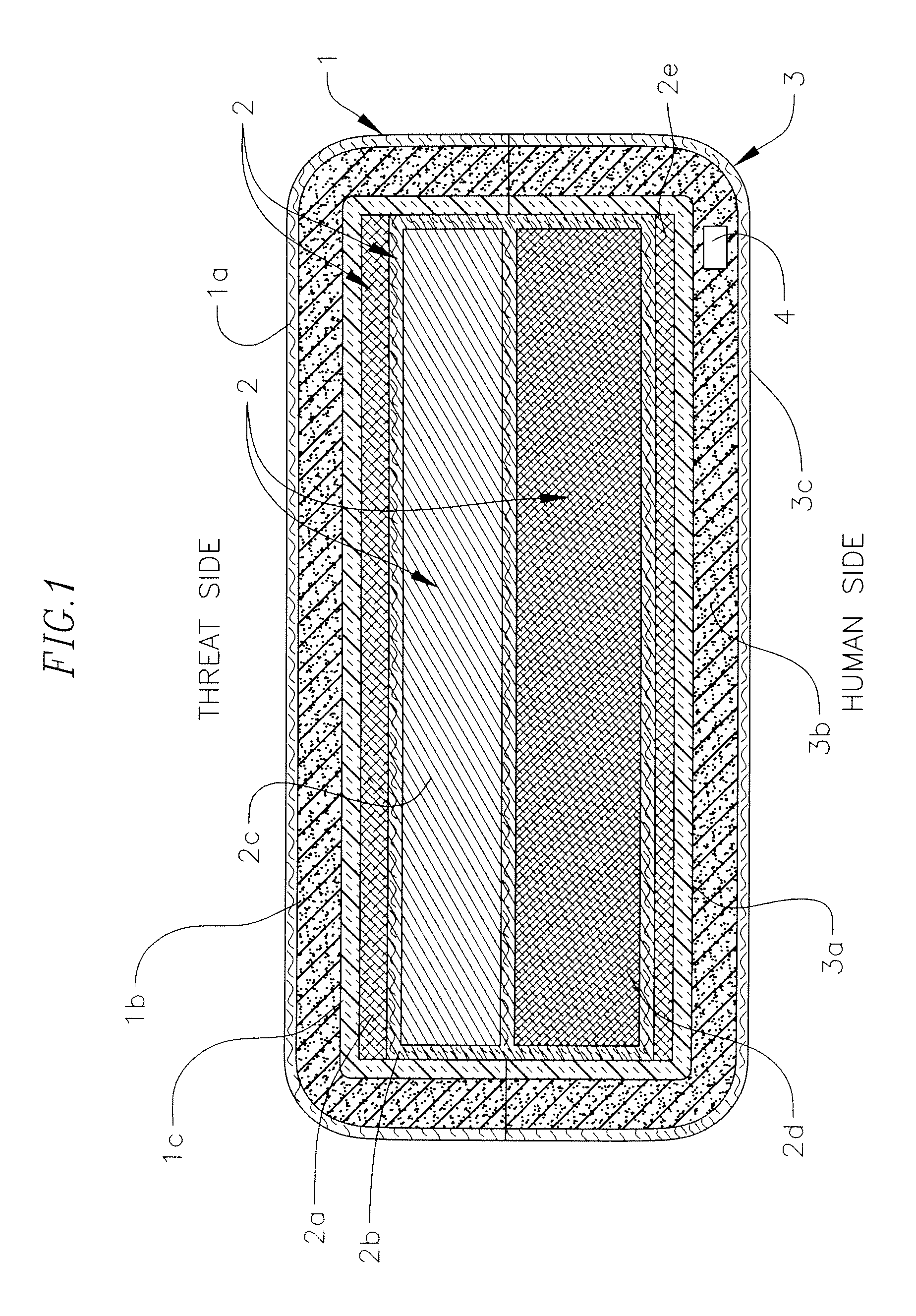Encapsulated ballistic protection system
a ballistic protection and ballistic technology, applied in the field of ballistic protection systems, can solve the problems of reducing affecting reducing the safety of personnel, so as to enhance the overall ballistic performance capability, enhance the ballistic resistance performance, and improve the overall ballistic performance. the effect of performan
- Summary
- Abstract
- Description
- Claims
- Application Information
AI Technical Summary
Benefits of technology
Problems solved by technology
Method used
Image
Examples
Embodiment Construction
[0054]In the following detailed description, certain exemplary embodiments of the present invention are shown and described, by way of exemplary embodiments. As those skilled in the art would recognize, the described exemplary embodiments may be modified in various ways without departing from the spirit and scope of the present invention. Accordingly, the drawings and description are to be regarded as illustrative in nature, rather than restrictive.
[0055]As used herein with respect to embodiments of the present invention, the term “encapsulated” refers to the complete covering of all surfaces of an object, material, or group of materials by one or more “encapsulating” or “encapsulation” materials and / or layers.
[0056]Embodiments of an encapsulated ballistic protection system (EBPS) according to the present invention include a layered system defining a panel or structure composed of a variety of materials arranged in an order to provide ballistic resistance and protection. In some emb...
PUM
| Property | Measurement | Unit |
|---|---|---|
| tensile strength | aaaaa | aaaaa |
| speeds | aaaaa | aaaaa |
| thick | aaaaa | aaaaa |
Abstract
Description
Claims
Application Information
 Login to View More
Login to View More - R&D
- Intellectual Property
- Life Sciences
- Materials
- Tech Scout
- Unparalleled Data Quality
- Higher Quality Content
- 60% Fewer Hallucinations
Browse by: Latest US Patents, China's latest patents, Technical Efficacy Thesaurus, Application Domain, Technology Topic, Popular Technical Reports.
© 2025 PatSnap. All rights reserved.Legal|Privacy policy|Modern Slavery Act Transparency Statement|Sitemap|About US| Contact US: help@patsnap.com



